VOLKSWAGEN Phaeton User Manual
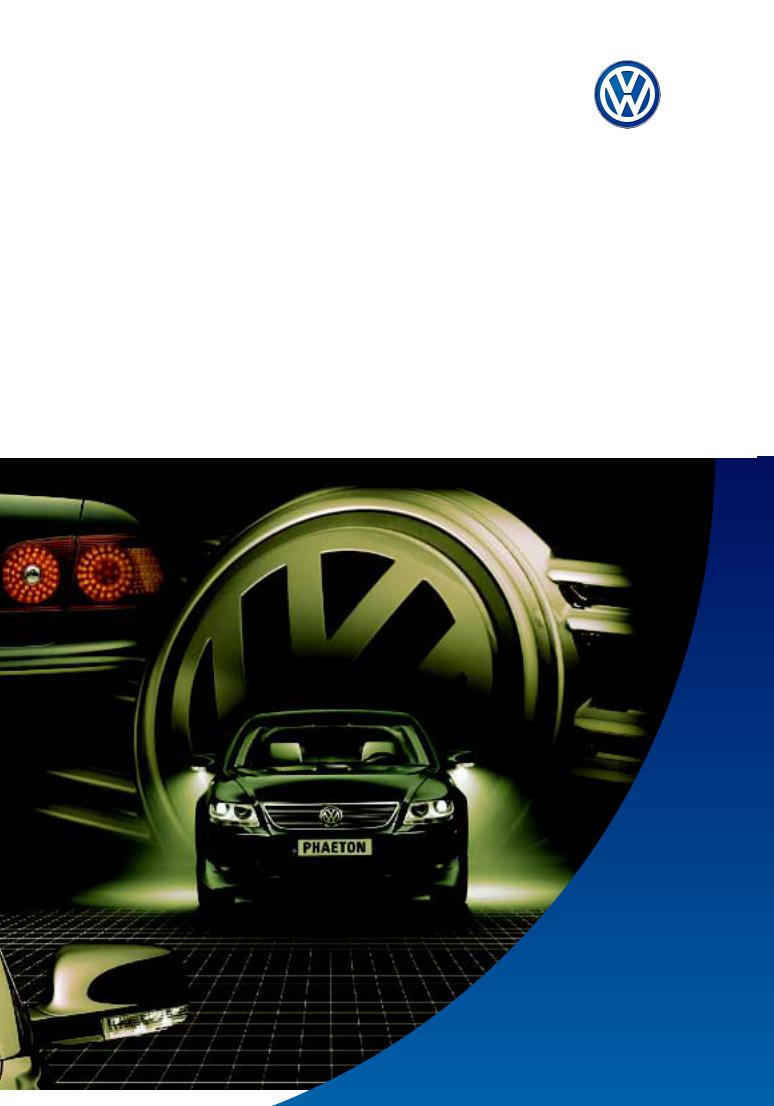
Service.
Self-Study Programme 270
The Phaeton
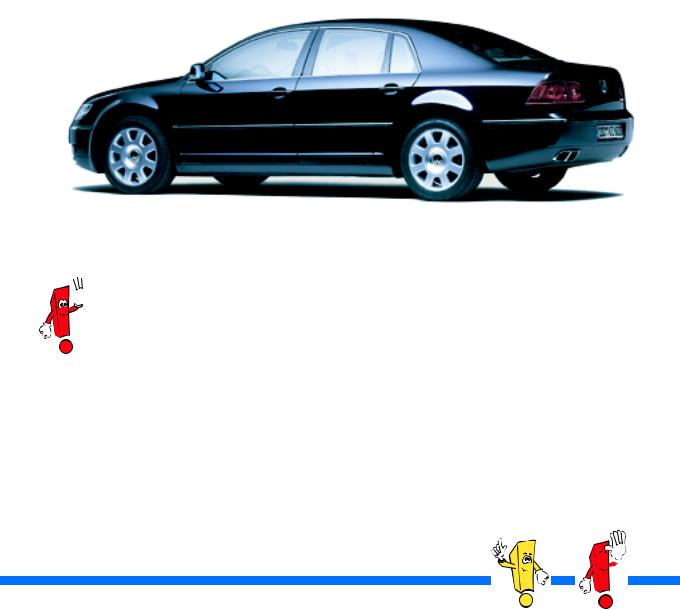
The Phaeton — Volkswagen's flagship — is based on developments in the international market for luxury goods: a product's quality alone is no longer sufficient to guarantee success in highly-developed markets. The prestige and value of the brand are decisive in influencing purchase decision-making.
Customers' brand awareness is becoming increasingly manifest, thereby necessitating Volkswagen's entry into the higher-class segment.
The launch of the Phaeton witnesses the development of a product which meets customers' technical requirements as well as satisfying the value and prestige demands made on the Volkswagen brand.
270_241

 There are separate self-study programmes on the following topics:
There are separate self-study programmes on the following topics:
W-engines (SSP248/250),
Air-conditioning/Heating (SSP271),
On-board network (SSP272),
Convenience and safety electronics (SSP273),
Infotainment (SSP274),
Air suspension (SSP275),
Automatic distance control ADC (SSP276),
Chassis (SSP277).
NEW |
Caution |

 Note
Note
The self-study programme illustrates the structure
and operation of new developments!
Contents will not be updated.
Please refer to the appropriate service material for current test, setting and repair instructions.
2

At a Glance
In a nutshell . . . . . . . . . . . . . . . . . . . . . . . . . . . . . . . . . . .4
Bodywork . . . . . . . . . . . . . . . . . . . . . . . . . . . . . . . . . . . 12
Passenger protection. . . . . . . . . . . . . . . . . . . . . . . . . . .26
Engines. . . . . . . . . . . . . . . . . . . . . . . . . . . . . . . . . . . . . .32
Gearbox . . . . . . . . . . . . . . . . . . . . . . . . . . . . . . . . . . . . .38
Chassis . . . . . . . . . . . . . . . . . . . . . . . . . . . . . . . . . . . . . .50
Convenience electronics . . . . . . . . . . . . . . . . . . . . . . . .52
Electrics . . . . . . . . . . . . . . . . . . . . . . . . . . . . . . . . . . . . .56
Heating/air-conditioning system . . . . . . . . . . . . . . . . .66
Infotainment . . . . . . . . . . . . . . . . . . . . . . . . . . . . . . . . .70
Service . . . . . . . . . . . . . . . . . . . . . . . . . . . . . . . . . . . . . . 74
3
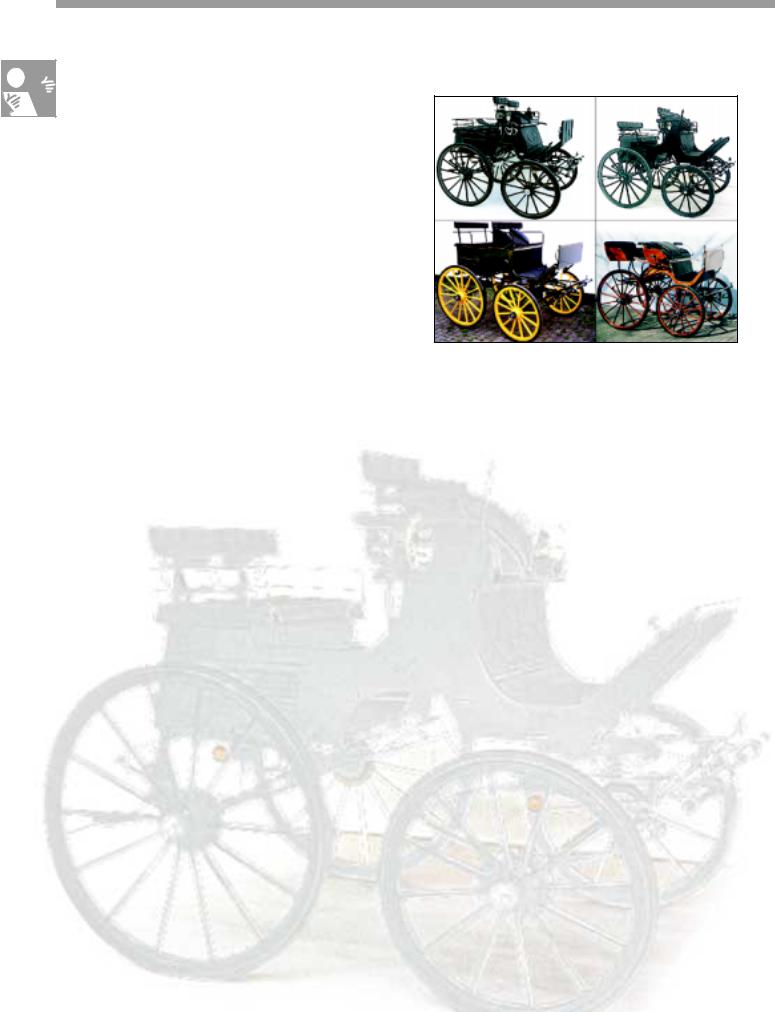
In a nutshell
The Phaeton name
The Phaeton or Phaethon name is originally derived from Greek mythology. Phaeton (the 'incandescent') was the son of the sun god Helios, who was the owner of the sun chariot.
Derived from this, Phaetons also refer to the four-wheeled walking coaches which have been popular since the 18th century. This refers to open owner-driver carriages, featuring a trestle seat for 2 persons with or without a canopy top. Behind the trestle seat there is a seat for one or two passengers facing forwards.
Even nowadays, these Phaetons are driven at |
270_150 |
special tournaments - original specimens having become extremely coveted collector items.
At the onset of the 20th century, the term Phaeton stood for touring carriages with a fabric canopy and without side windows.
The name’s phonetics*
Phaeton - How’s it pronounced?
Phaeton is pronounced as follows:
Fay - ton.
The ending is spoken with an unvoiced 'N', comparable with the pronunciation of the word Futon, Flacon or Anton.
*Phonology
270_151
4

Phaeton’s place in automotive history
Since 1910, August Horch endowed some of his models with the “Phaeton” suffix.
The Horch 18/90 bhp 450 Phaeton 1931, the Horch 12/28 bhp Phaeton 1911 as well as the Horch 853A Parade Phaeton with only three specimens dating from 1937, the last remaining model of which is being traded at
US$ 334,000, are just a few examples.
The fact that Volkswagen has chosen the name Phaeton for the group's flagship is an indication of the continuation of a tradition of making superior quality-control requirements in the production phase, thus providing the ultimate in exclusivity for each future owner of a Phaeton.
270_169
Horch 18/90 bhp 450 Phaeton, 1931-32
270_170
Horch 12/28 bhp Phaeton, 1910-11
270_168
Horch 853A Parade Phaeton, 1937
5
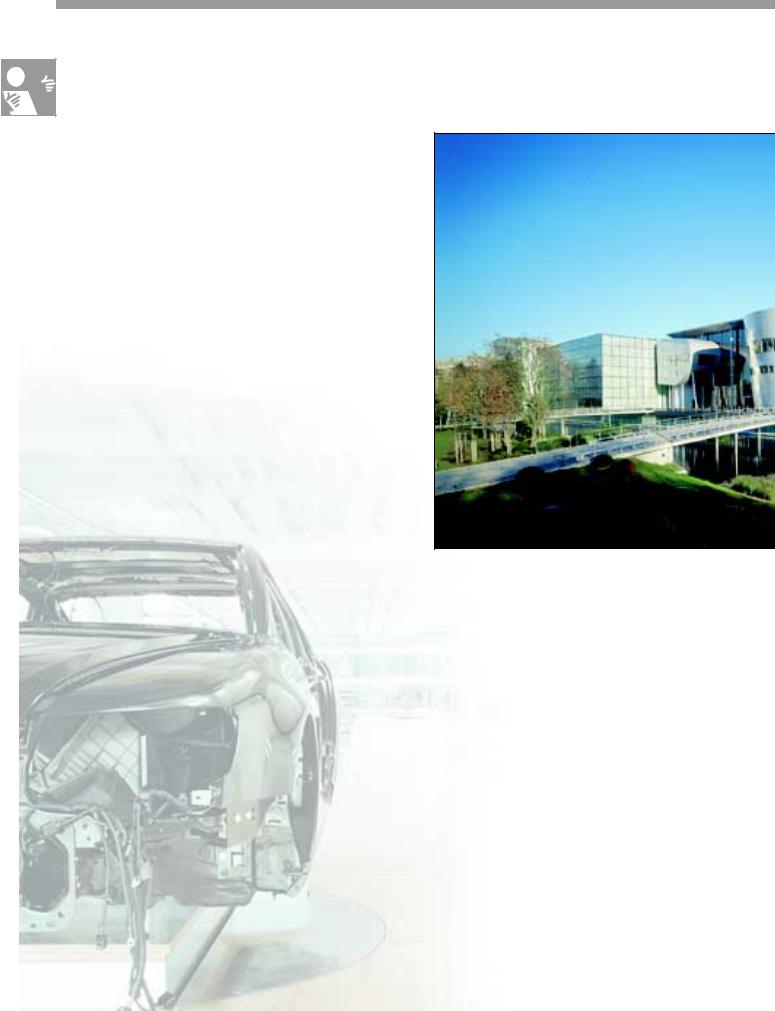
In a nutshell
The concept
The Transparent
The transparent factory represents a further significant milestone for Volkswagen's cus- tomer-oriented manufacturing and delivery. Not only has the exclusive Phaeton led to the building of an impressive production line in Dresden, but it has also engendered the inception of a polished and precisely-func- tioning logistics concept. In addition to these outstanding technical production details, purchasers of this high-grade automobile can expect a perfectly-arranged vehicle transfer corresponding to an event of superlative pomp.
270_128
The production
Contrary to the popular opinion that automobile manufacture is irrevocably linked with dirt and oil, the vision of manufacturing evident in Dresden depicts production in an almost noble light. The core element of the manufacturing process features overlapping conveyor belts with fine wood parquet instead of metal lines. This high-grade optical characteristic in the production line is reminiscent of a manufacturing atmosphere otherwise witnessed only in elite luxury sports car forges.
6
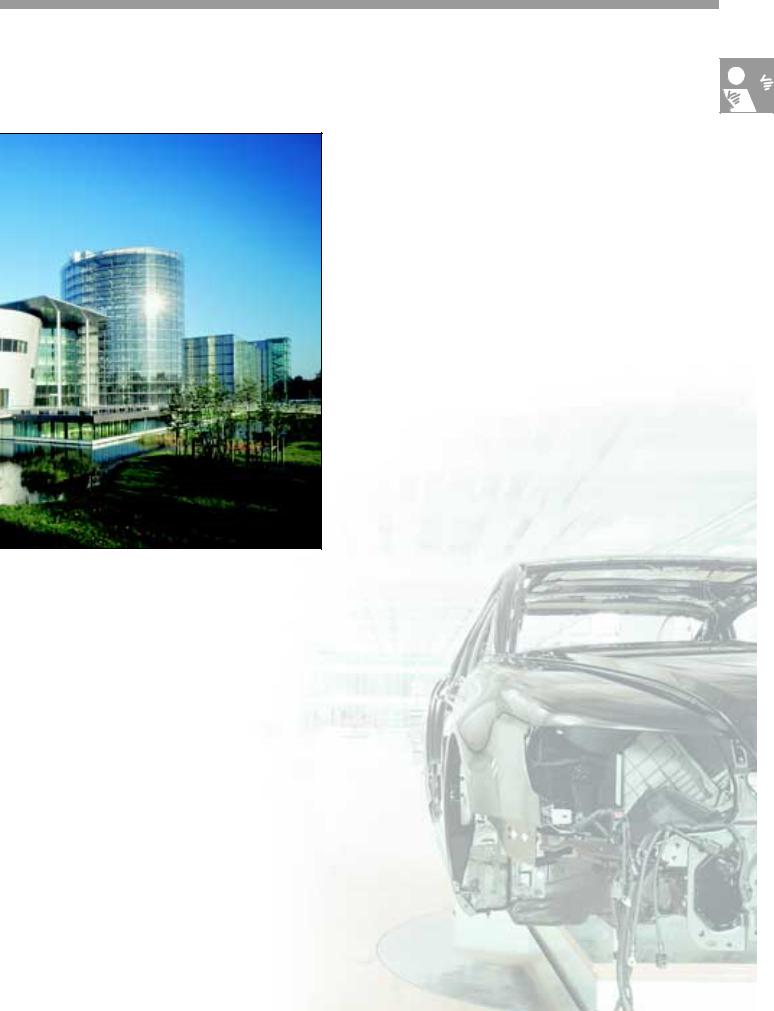
Factory
270_130
The event*
An exclusive automobile cries out for the appropriate stage-management of its delivery. Customers are the centre of attention in the transparent factory's emotionally and technologically impressive discovery area. Potential Phaeton owners are treated to a birds-eye view of production via livecam during a Virtual Production Tour.
*happening, show
The logistics
An automated system steers the baskets containing the vehicles' individual components through the factory. The basket 'accompanies' the corresponding vehicle throughout the assembly stage. This avoids unnecessary journeys. The chassis, including the engine, gearbox and exhaust system, as well as the body are simultaneously mounted on different floors, being transported to a different level in a glass elevator, before being finally assembled into the complete vehicle. Once the manufacturing process has been completed, the Phaeton is once again placed on the overlapping conveyor belt before receiving its finishing touches and its final check.
7

In a nutshell
The Phaeton
This two-page spread affords an overview of technical innovations. Detailed descriptions of the individual topics can be found in this and other Phaeton self-study programmes.
Phaeton innovations
270_053
8
●Rear window heated by practically invisible tungsten threads
●Mudguards and spare tyre recess made of plastic
●Extremely narrow body jointing, PVC-free underbody protection
●Doors, engine bonnet and tailgate made of aluminium
●Fully-galvanised body
●Tail lights with
2-colour LED technology
●Antennae invisibly integrated in the rear window
● Superior paintwork, anti-scratch, exceptional brilliancy
● Air-conditioned 12and 18-position seats, keyless access
function, automatic distance control, multifunctional steering wheel
●Infotainment system with navigation, TV and radio/CD, CD changer in the glove compartment, 4-zone air-conditioning, solar roof
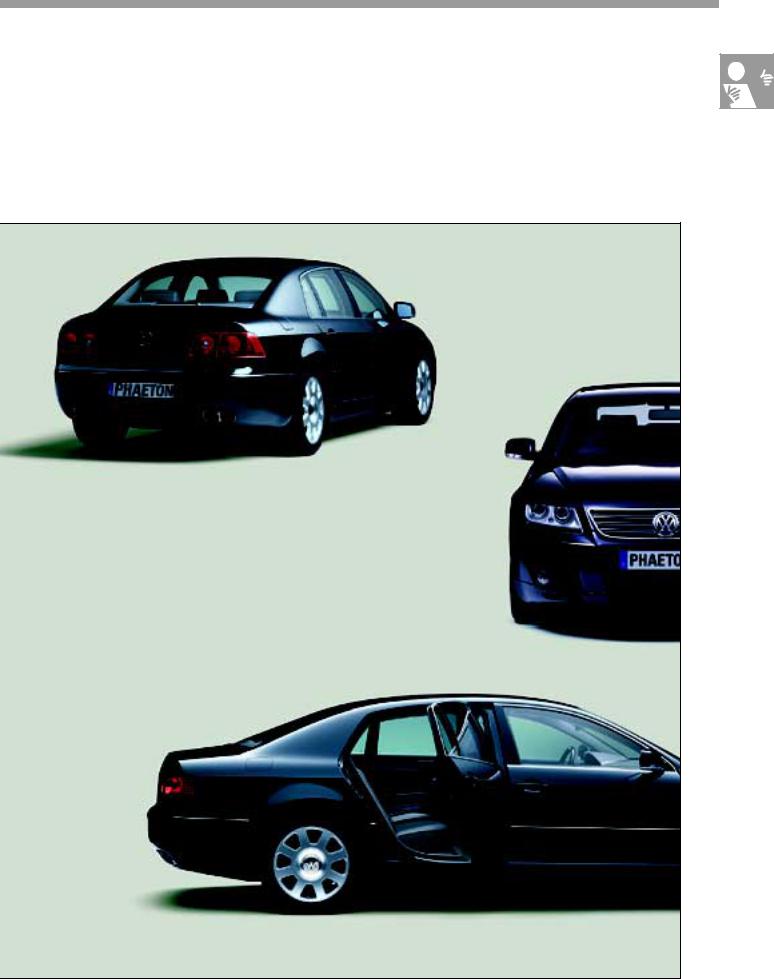
● Xenon headlights with automatic headlight range control
●Surrounding illumination via front, rear and forward lighting simplifies orientation when getting out of the car in the dark
●4-corner air suspension with automatic control
●Electro-mechanical high-pressure nozzles for cleaning headlights
●Heated, heat-insulating and infrared-reflecting windscreen
270_054
● Side and rear windows made of twin-pane laminated safety glass
9

Technical data
1450
1628 |
1612 |
1903 |
|
1121 |
2881 |
1051 |
|
5055 |
|
270_118
Dimensions and weights
Length |
5,055 mm |
|
|
Width |
1,903 mm |
|
|
Height |
1,450 mm |
|
|
Wheelbase |
2,881 mm |
|
|
Turning circle |
12 m |
|
|
Tank volume |
90 l |
|
|
Front track width |
1,628 mm |
|
|
Rear track width |
1,612 mm |
|
|
Total permitted weight |
2,600 - 2,990 kg* |
|
|
Empty weight |
1,995 -2,413 kg* |
|
|
Luggage compartment |
500 l |
space |
|
|
|
Drag coefficient |
0.32 cw |
*depending on the engine
10
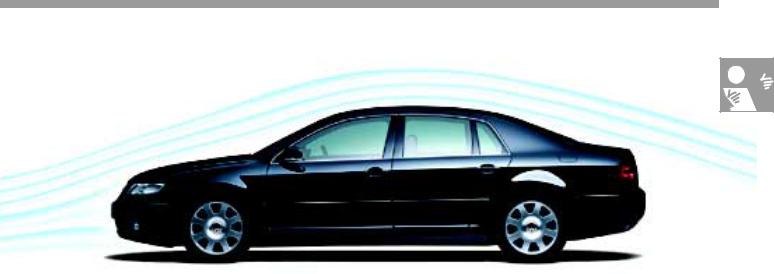
Aerodynamics
270_047
The aerodynamics
The Phaeton has a low drag coefficient of 0.32 cw — a level which was achieved by applying various measures:
●The underbody has an extremely smooth design,
●The windscreen wipers are embedded,
●The body gap dimensions are very low,
●The front has an arrow-shaped design and
●The body is lowered at higher speeds.
Small features such as the retractable headlight cleaning nozzles, the antenna-free body and the smooth body transitions are also responsible for this low drag coefficient.
11
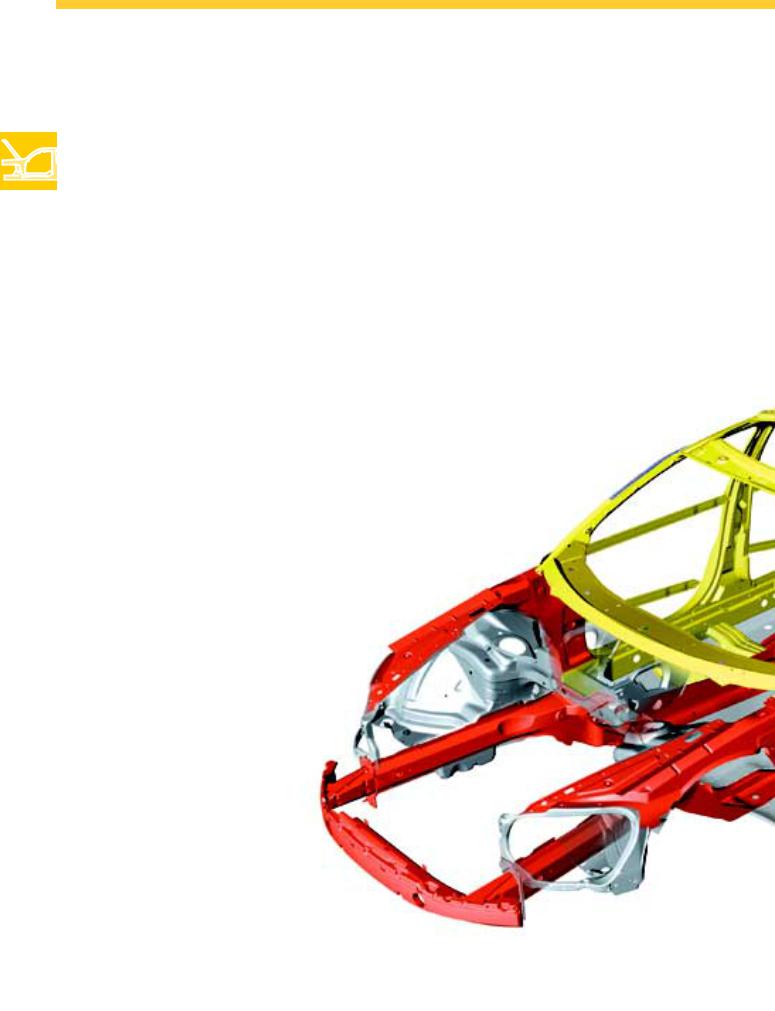
Bodywork
The raw bodywork of the Phaeton
The body structure
The Phaeton's bodywork is a complete innovation.
The core design focus involved a high level of crash safety and body rigidity. The gap dimensions of the flaps and doors prove to be very low due to the high body rigidity.
Static rigidity
The extremely high static rigidity is a prerequisite for:
-optimal chassis design
due to almost complete lack of inherent movement within the bodywork and
-excellent door and flap functioning with the tightest of gap dimensions.
270_154
Doors and flaps are made of aluminium and the front mudguards are made of plastic in order to limit the weight while still observing the high safety and comfort requirements.
Furthermore, the bodywork consists of highgrade and super high-strength steels and is completely galvanised.
12

Safety features of the raw bodywork
●High energy absorption at the front and rear of the vehicle
●Stable passenger compartment
●High protection in event of side impact due to the:
-bonding of the B-pillar made of super high-strength steel with the side member,
-high-strength aluminium profiles in the doors
●Partner protection: Due to the relatively soft external bodywork areas, the crash performance is designed to afford maximum protection to other parties involved in
an accident.
●Use of high-grade and super high-strength steel
in important areas
|
Dynamic rigidity |
|
The high dynamic rigidity is a |
|
prerequisite for: |
|
- advantageous vibration |
|
characteristics and thus for a high |
|
level of comfort and |
|
- acoustic comfort |
|
(no noises caused by movement of |
270_155 |
the interior panelling). |
Key:
red |
= |
main frontal crash area |
yellow |
= |
passenger compartment |
green |
= |
main rear crash area |
dark blue |
= |
epoxy resin foam |
light blue |
= |
plastic reinforcement |
13

Bodywork
Bodywork attachments
|
Aluminium parts |
Plastic parts |
|
● Engine bonnet |
● Front mudguard |
|
||
|
||
|
● Reinforced doors |
● Fuel cap |
|
||
|
● Tailgate |
● Spare tyre recess |
|
||
|
|
● Front and rear bumpers |
Key:
blue = aluminium parts
brown = plastic
270_114
14

Glued-in-place plastic spare tyre recess
The following components are integrated in the spare tyre recess:
-Compressor for air suspension,
-Activated carbon filter and
-Spare wheel.
270_115
270_004
Doors with high-strength inner sections made
Detailed view of spare tyre cavity, from below
of die casting, laser-welded
15

Bodywork
The silencers
Sound deadening was already a major issue when developing the body-in-white. The consistent deployment of absorption materials in the engine compartment, tunnel, luggage compartment and behind the panelling has led to the attainment of an above-average reduction in noise.
Diesel and petrol engine
The two-tone insulating foils demonstrate the different insulation methods in the diesel and petrol engine.
270_182
Key:
blue |
= aluminium expansion foil, 4.5 mm sandwich |
|
green |
= bitumen plastic-foil, pressure-sensitive bonding, 2 mm |
|
red |
= bitumen plastic-foil, magnetised, thermoplastic bonding 2 mm |
|
orange |
= bitumen plastic-foil, thermoplastic bonding 2 mm |
|
pink |
= bitumen foil with aluminium foil, magnetised, 3 mm |
|
blue/red |
= |
blue - diesel, red - petrol engine |
blue/orange |
= |
blue - diesel, orange - petrol engine |
16

High-insulation glazing & laminated glass
The high-insulation glazing made of laminated glass distinguishes itself with its improved reduction of thermal exposure, however, without influencing permeability to light.
The glazing reduces ultraviolet radiation and contributes to an improved noise insulation. This is facilitated by two foils incorporated into the glazing. The rear and side windows are also manufactured with thermally-tempered laminated glass with an infrared reflective coating. This improves safety as laminated glass panes cannot shatter due to their incorporated safety foils.
Windscreen
●Two-layer, burglar-inhibiting, heat-insulating, laminated safety glass
●Electric windscreen heating (optional) with invisible filaments through an electrically conductive infrared reflective coating.
●The heated windscreen is switched on and off using the 'Defrost' button at the
display and operating unit at the front
Rear window with tungsten threads
The rear window is heated by practically invisible tungsten threads which are embedded between the inner and outer pane. Furthermore, all antennae are integrated in the upper third of the rear window. The external streamlined quality is therefore not impeded by bothersome antennae.
270_040
Ultraviolet protective foil
Infrared reflective coating (heated windscreen)
Heating duration depending on outside temperature:
5 to 0 °C |
= |
2 minutes |
-20 °C |
= |
4 minutes |
-40 °C |
= |
6 minutes |
In order not to overload the on-board network, the heating is switched off after a specific timeframe, depending on the outside temperature.
Antennae |
Heated sections |
270_178
17

Bodywork
The tailgate
Power-assisted closing of the tailgate
The Phaeton is also available with a system allowing the driver to automatically open and close the tailgate.
This power-assisted closure is not only a comfort feature but is also an enhancement of the entire locking mechanism.
270_001
Retractable rear lock with closing aid
The lock is retracted when opening the tailgate, thereby eliminating the risk of injury. The retraction of the lock also prevents the possible soiling of clothing by the oil or grease present in the lock.
When closing the tailgate, the lock re-emerges from the tailgate into locking position during the final third of the closing procedure. Then it pulls the tailgate the final centimetres into the lock and locks it (closing aid).
Retractable rear lock
270_123
18
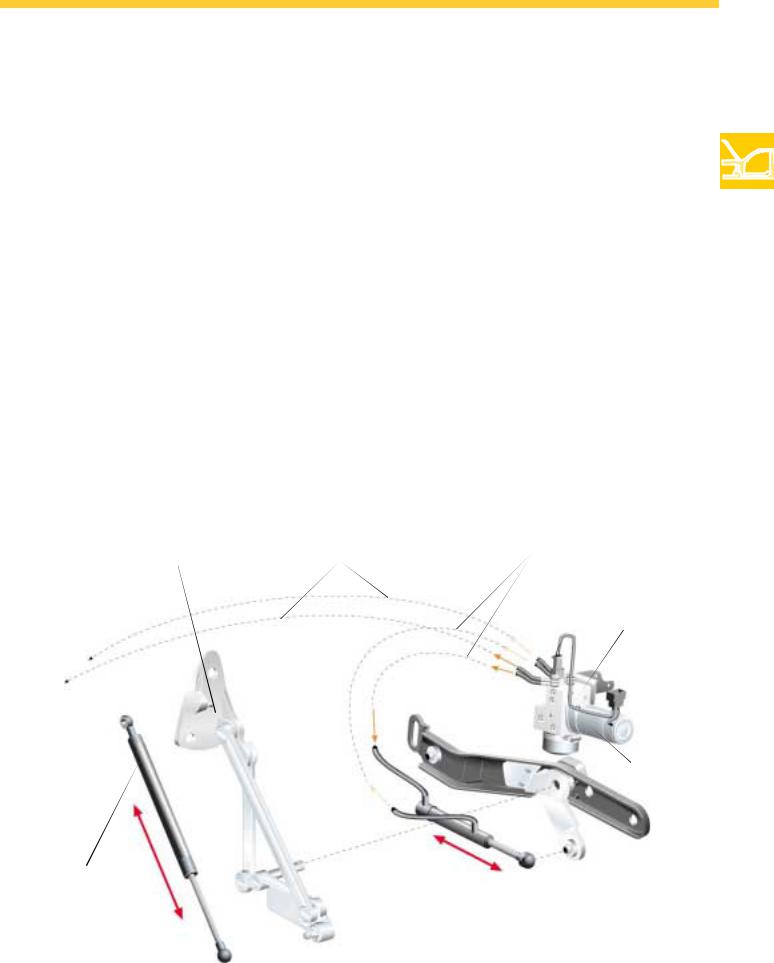
Function of the power-assisted closing
The power-assisted closing is based on an elec- tro-hydraulic system. Oil is pumped into the hydraulic line system by an electric pump. The feeding of oil to the piston or piston-rod end of the hydraulic cylinder facilitates the opening or closing of the flap via a driving shaft at the door hinge. The pump is incorporated at the right of the tail section.
Opening
To open the tailgate, operate either the switch in the door panelling, the microswitch in the VW emblem on the tailgate or the radio-wave remote control.
Closing
The switch in the tailgate serves the purpose of closing the tailgate.
Safety equipment
The power-assisted closing has an anti-trap feature. If the electric motor in the hydraulic component perceives resistance which exceeds a defined level, power-assisted closure is not merely stopped but reversed* a little in order to release the jammed object. The same procedure is adopted when opening. If, for example, it hits a low garage roof, the motor stops for a moment. However, the tailgate then remains in this position without reversing. Renewed actuation is then required.
*moves back
|
Oil supply, left |
Oil supply, right |
|
hydraulic element |
|
|
hydraulic element |
|
Door hinge |
|
|
|
|
Hydraulic component
 Electric motor
Electric motor
Gas-assisted shock |
|
absorber |
Hydraulic cylinder |
|
270_122
19
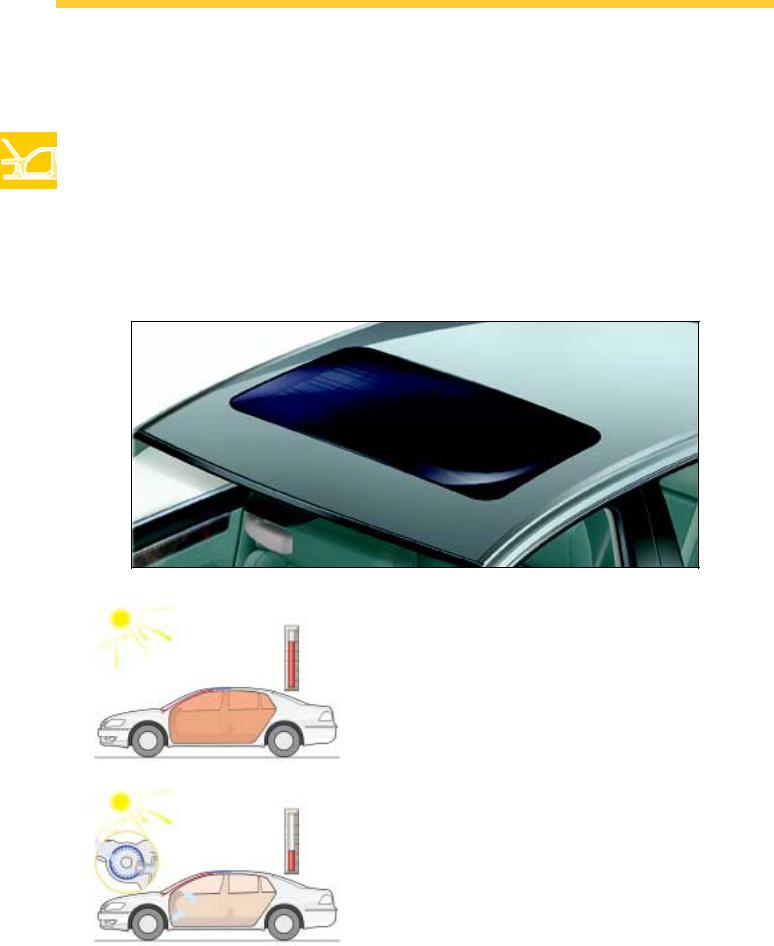
Bodywork
The sliding roof
The Phaeton is available with a solar sliding roof with a fixed inside roof lining and a sliding roof / lifting roof with a separate electrically-sliding inside roof lining.
Solar sliding roof
The solar roof's 28 monokristallin solar cells supply an electrical output of 37 watts. This energy is used to operate the interior ventilator which is capable of reducing the temperature by up to 20 °C, when the vehicle is parked, by feeding fresh air into the vehicle's interior.
270_177
If the interior ventilation has been activated via the Infotainment system, the interior ventilator starts operating when there is sufficient sunlight.
This cools down the interior at high temperatures. The circulation of air prevents the windows from misting in winter.
270_124
270_125
20
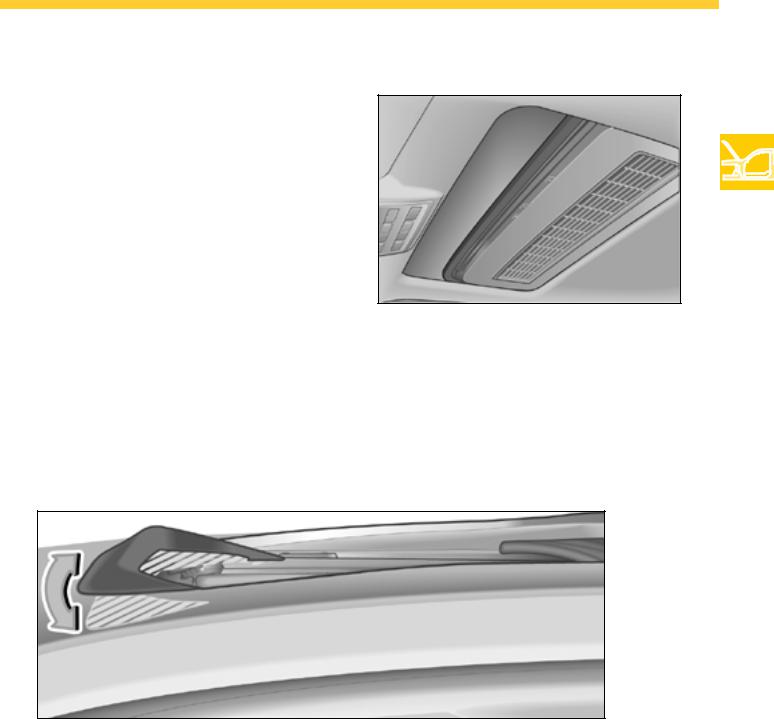
Sliding roof / lifting roof with solar shading and an electrical wind deflector
A separate electric motor moves the inside roof lining at the same time as the glass roof is opened or closed. This can also be adjusted regardless of the glass roof's position.
All closing procedures are electronically monitored and have an anti-trap feature.
270_166
Depending on the driving speed and the roof opening, the wind deflector is controlled electromechanically in order to prevent wind noise and draughts.
270_167
21

Seats
The front seats
The Phaeton is also available with air-condi- tioned seats. Air-conditioning is provided through the interaction between the seat heating and ventilators.
The ventilators, which are integrated in the seat frames, feed the air heated by the seat heating to the occupants through fine perforations in the seat leather. The massage function is imple-
The 12-position seat
Adjustment function
As standard, the Phaeton comes with 12-position seats. The following functions are electrically adjustable: longitudinal direction, seat height and inclination, as well as the backrest inclination. Furthermore, the movement direction of the lumbar support is adjustable both backwards/ forwards and up/down.
Memory functions
The memory package for the 12-position seats includes a range of saveable functions. In addition to the seat settings, the memory function can also save the positions of the steering column, the mirror and the seat belts.
Easy-entry function
The easy-entry function facilitates the convenient getting in and out of the vehicle by automatically moving the steering column into its uppermost and furthest-forward position.
Air-conditioning / massage function
Air-conditioning in the 12-position seats is provided by ventilators - which are integrated in the seats - and which feed temperate air through the fine perforations in the leather. The massage function is implemented through the mechanical
mented by a slow adjustment of the lumbar support. The belt mechanism integrated in the seat endows the Phaeton with an even greater level of comfort. Furthermore, the optional second automatic belt in the 18-position seat gives increased belt comfort and improved safety. The Phaeton also has an active headrest system (AKS).
270_147
4-position lumbar support.
The lumbar support is moved automatically up and down, thus facilitating the relaxation of the spine and back muscles.
22

The 18-position seat
Adjustment function
As an optional extra, the Phaeton comes with high-quality 18-position seats.
They also offer the option of adjusting the backrest head and the seat depth, as well as an electrical adjustment of the headrest.
The 18-position seat can be equipped with an automatic lap belt on request.
Memory functions
In addition to the functions featured in the 12position seat, the memory package for the 18position seat also offers the option of saving the positions of the headrest, the seat depth and the backrest head.
270_146
Air-conditioning / massage function
The range of air-conditioning functions in the 18-position seats is equivalent to that of the 12-position seats.
23
